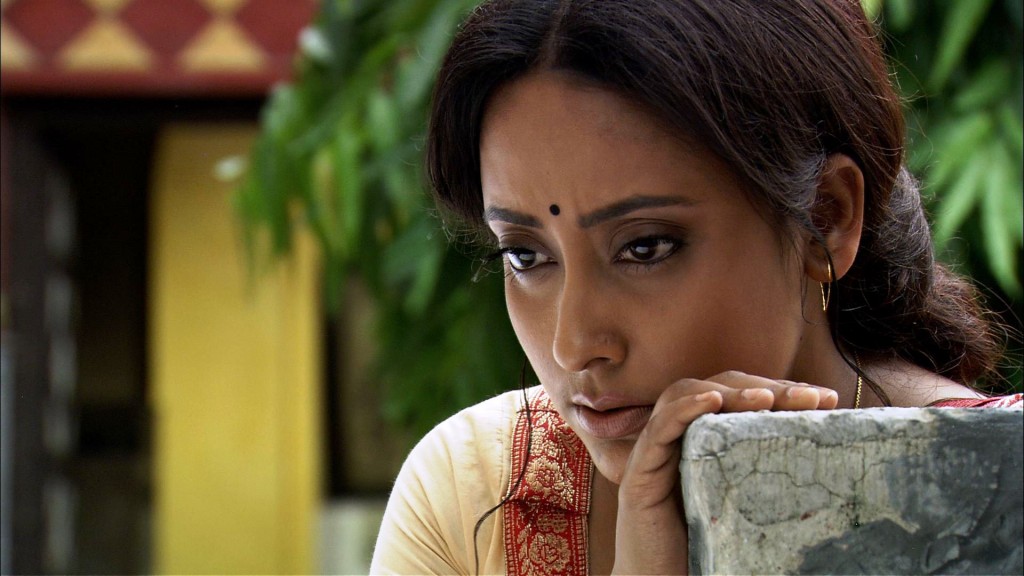Char Adhyay (Four Chapters), written by Rabindranath Tagore in 1934, is a controversial novel and perhaps, the most challenging of all his work to place on celluloid. It was first made in Hindi by Paul Zils as Zalzala in 1952 and then by Kumar Shahani in 1997, again in Hindi. The late Bappaditya Bandopadhyay also visited it in 2012 as Elar Char Adhyay. Nitish Mukherjee completed Char Adhyay in 2014 but it got released only now. With Zalzala’s print lost and the film not not seen by this critic, the other three productions not only reveal the complexity of Tagore’s novel but also its perception as a celluloid interpretation, differing widely from one director to the other.
Tagore’s personal take on some of the people who took on the responsibility of leading a movement towards freedom through training a group of youngsters to achieve independence through violence was underwritten by his belief that the leaders were deceitful, exploitative and selfish. In fact, many of Tagore’s critics were angered by his exposing of ‘patriotism’ as preached by Indranath (Tarun Chakraborty). So Tagore called Char Adhay a love story. The film explores both layers – the intense love between Ela (Mallika Majumdar) and Atin (Debdoot Ghosh) that draws Atin into the movement because Ela is already in it, and the political beliefs that lead them but get shaken over time.
Mukherjee, a gifted artist and painter in his own right, chooses to emphasize on the deepening love of Ela for Atin alongside her disillusionment with Indranath and his selfish motives while Atin gets sucked into the movement so much that he moves away from Ela when Indranath commands him to. Mukherjee turns the screen into a rainbow of rich visual images accompanied by some of the rarest of Tagore songs on the music track. Thunder, rains and lightning run parallel to the pace and reality of events in a central space occupied mainly by Ela as she is the core of the story and the film.
Mallika Majumdar, a very talented actress on the small screen, finally gets the opportunity to portray one of the most complex of Tagore’s women. Ela is a rebel, a romantic, a passionate woman madly in love with Atin. She is torn between her love for Atin and her commitment to the freedom movement that does not permit marriage or family life. Majumdar does full justice to the character but some of the scenes tend to lose perspective because of too many tight close-ups of Ela alone and of Ela and Atin together. Debdoot is another underutilized actor who portrays Atin with the right touch of confusion, puzzlement and his intense love for Ela that slowly ebbs away as he gets embroiled in the movement that demands of him to use violent means. Tarun Chakraborty’s Indranath is a bit stiff and camera conscious but perhaps, on hindsight, the director has fleshed out his diabolically political character in this manner by conscious design. Indranath actually believes that he is born to lead and not to execute. He rules out love between members of the group but does not take steps against Ela even when he knows that she is madly in love with Atin. For Atin, his rule changes, forcing the former to go into hiding.
The other characters are marginalised and the script suffers as a result. Uma, for instance, is too roly-poly and doll-like to belong to a group that needs to survive on minimum food or go on fasts. The important character of the tea-corner owner whose shop is actually a façade for hiding arms and weapons is edited out of this version of the film which does not affect the story in any way. The script, however, fails to bring across the crackling erotic chemistry between Atin and Ela that is there in the original novel. Intimate kissing scenes do not always carry the desired chemistry.
The songs are beautiful but there is one song too many that dilutes the intensity of the story and sometimes makes the film sound like a musical tribute to Tagore. There is a beautifully choreographed and photographed dance number too but it fails to blend seamlessly into the narrative. A moving touch is when one of the young revolutionaries comments on a colleague’s wonderful singing talent though he is a master at handling the gun. The editing is jarring at most places and the costume design lacks the period flavor and authenticity. For instance, Ela is always draped in beautiful white Bengali cotton saris that are never soiled and always very clean while Atin wears blue kurtas when Bengali men would wear only white.
Nitish Mukherjee’s Char Adhyay is an independent interpretation by the director whose artistic talents sometimes tend to overshadow his directorial flourishes but he largely adheres to the original story and its ideology that within the sub-plot, unmasks the reality of Indranath as the leader of a ‘movement’ that professes and perpetuates violence even of innocent natives. He strips the film of the heavy pedagogy and lectures the original novel is filled with and this leaves us with a film that for all its flaws, still offers us a great visual and musical experience.
Bengali, Drama, Color
https://www.youtube.com/watch?v=akGnvvbGZS4


